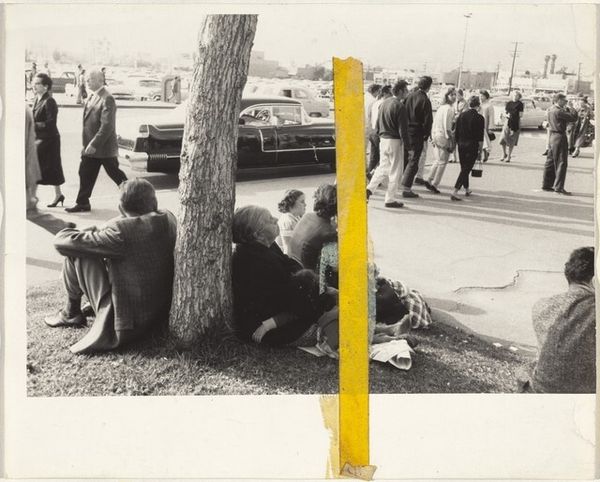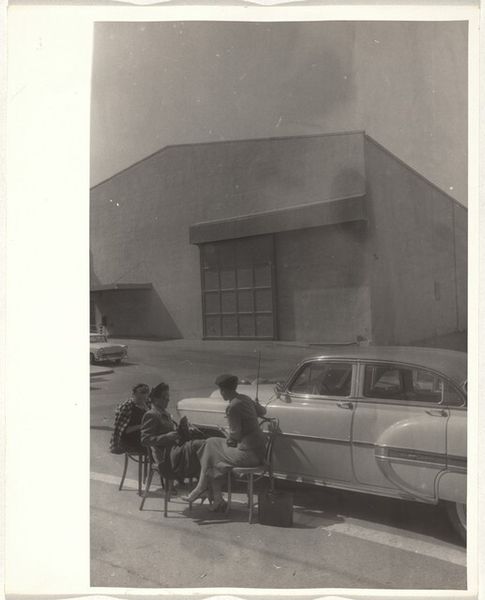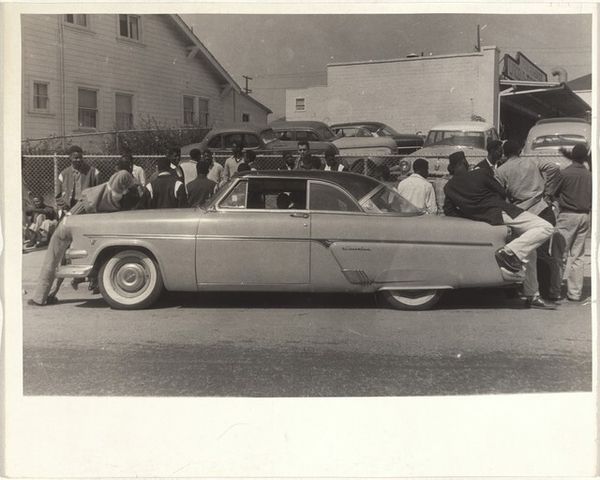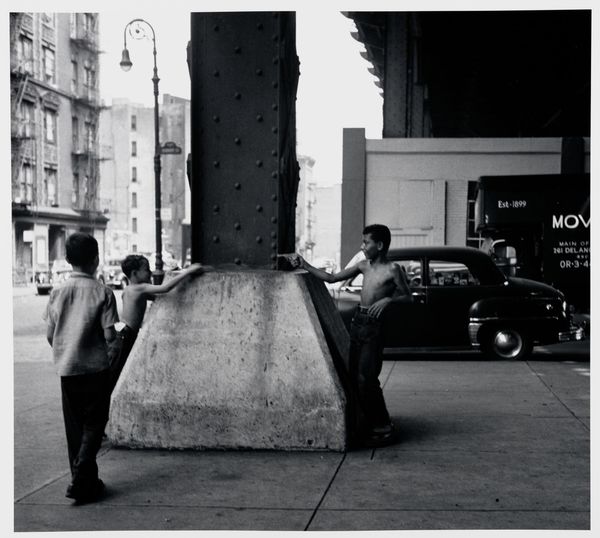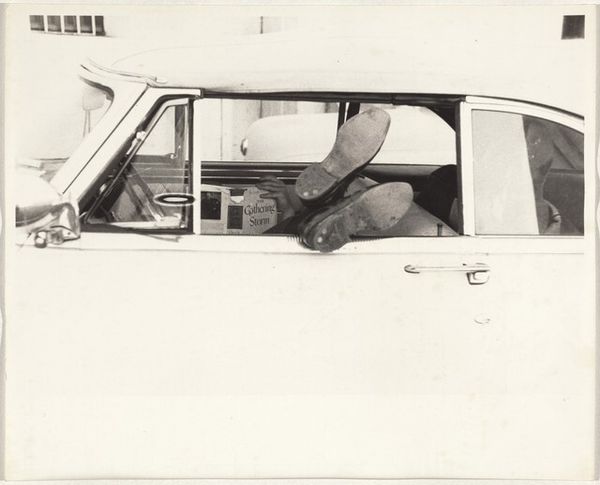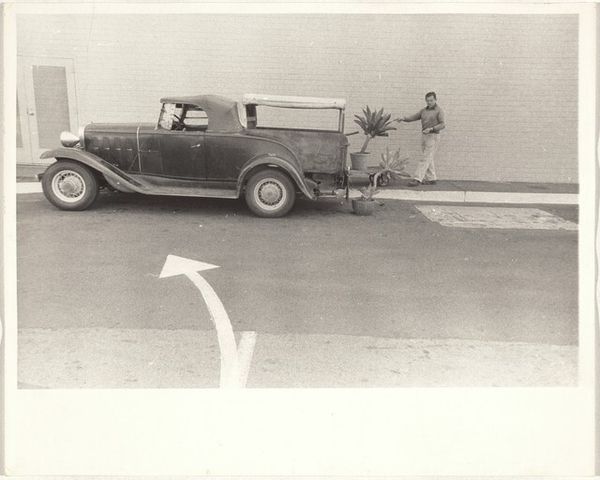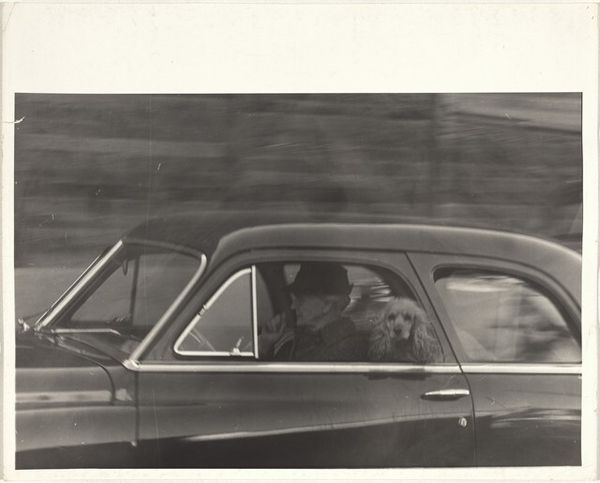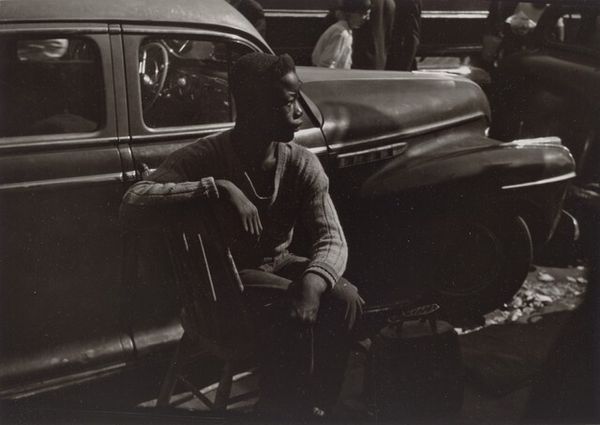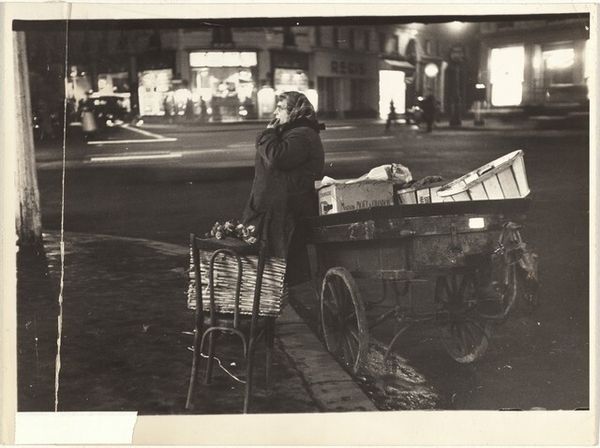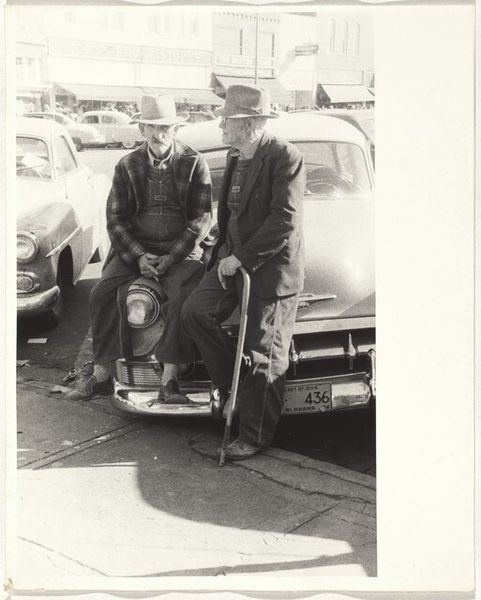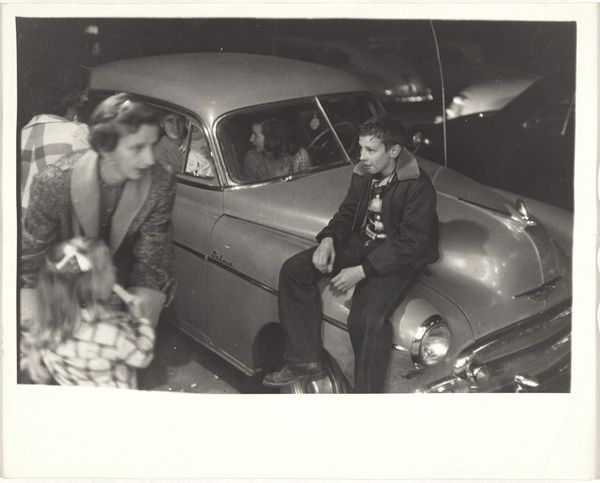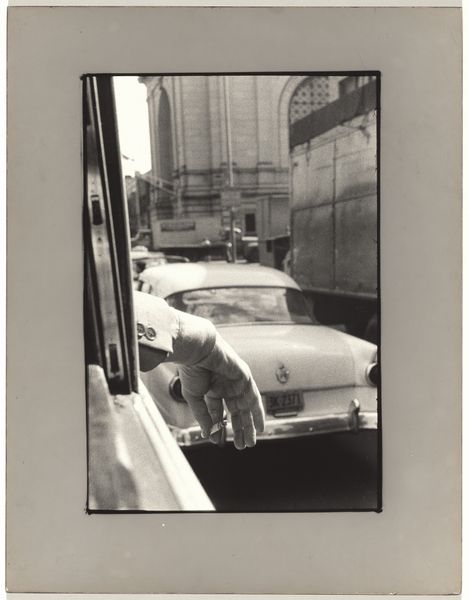
print, photography, gelatin-silver-print
#
print photography
#
photo restoration
# print
#
landscape
#
street-photography
#
photography
#
historical photography
#
gelatin-silver-print
#
modernism
#
realism
Dimensions: sheet: 20.3 x 25.2 cm (8 x 9 15/16 in.)
Copyright: National Gallery of Art: CC0 1.0
Editor: Here we have Robert Frank's gelatin-silver print, "Rose Bowl Parade--Pasadena, California" from 1956. The image is gritty, street-level. It's almost voyeuristic, capturing what seems like a private moment of someone collapsed on the sidewalk amid the Rose Bowl festivities. What do you see in this piece? Curator: Frank’s image encapsulates a critical perspective on mid-20th-century American society. Beyond the celebratory façade of the Rose Bowl parade, it captures a stark reality – a moment of vulnerability and possible despair juxtaposed against the backdrop of consumerism and idealized American life. Consider the political climate of the 1950s: Cold War anxieties, the burgeoning civil rights movement, and underlying economic disparities. Does this image reflect some of those tensions? Editor: I see what you mean. It’s like the American dream fractured and exposed, literally on the margins of a celebrated event. Curator: Precisely. Frank often focused on those on the periphery. He uses the visual language of documentary to hint at the stories of the marginalized, creating a counter-narrative to the dominant media representations. The fallen figure might be grappling with socioeconomic issues, alienation, or mental health struggles – realities often masked by the spectacle of events like the Rose Bowl. What does the Rose Bowl represent to you? Editor: It represents aspiration and, perhaps, exclusion. The fact that the man is looking at the debris of the party suggests some alienation to this event, which is so full of joy. Curator: The discarded newspaper further anchors the scene in a specific time and place. These details construct a powerful critique. The image reveals complexities often hidden beneath the surface of cultural celebrations. I think, photography like this acts as a voice. Editor: Absolutely. Looking at the image this way, it transforms from a snapshot of a moment into a powerful statement about social inequalities. Thanks. Curator: And that’s how art allows us to confront difficult conversations, moving past a one-dimensional understanding of our society.
Comments
No comments
Be the first to comment and join the conversation on the ultimate creative platform.
